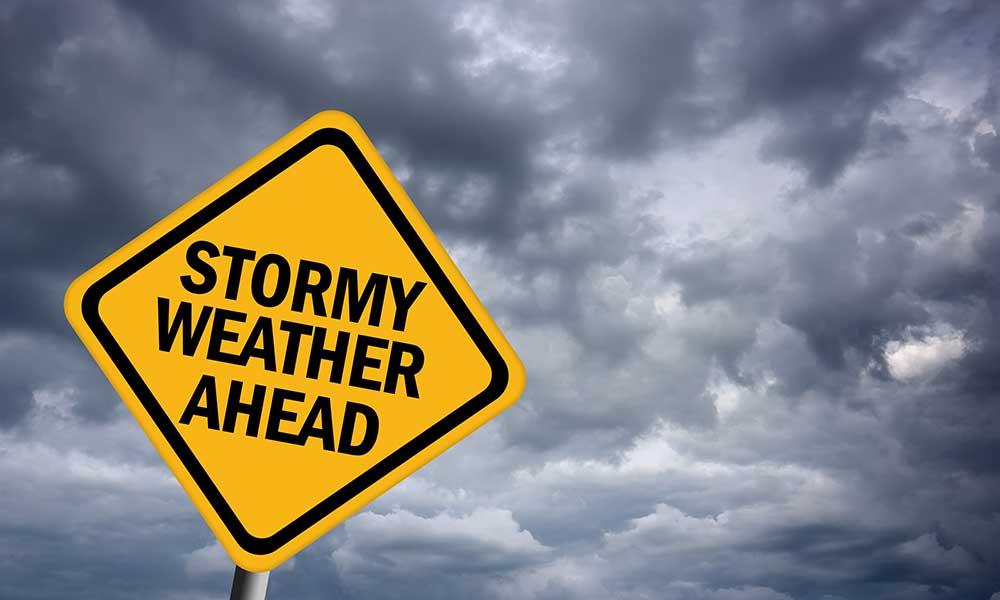It’s a nice, breezy day and the offshore winds are keeping the waves just where you want them to be.You and your friends are loving the clean-breaking surf and don’t mind a bit of extra wind.
Then you see it: two red pennants on the lifeguard stand that indicate a gale warning and that it is not safe to go into the water. But what is a gale warning and can you still surf in it?
Let’s take a look at what this weather forecast means for your day on the beach.
What is a Gale Warning Or Storm Warning?
Gale force winds are defined by the National Weather Service (and pretty much everyone else) as winds that are sustained at:
- 34-47 knots, or
- 39-46 miles per hour, or
- 63-87 kilometers per hour
These wind speeds are calculated over ten-minute periods. There are “levels” of gales: moderate, fresh, strong, and whole, and the roughness and height of the sea will be impacted by the type of gale you’re experiencing.
So what is a gale warning? “Warning,” in weather terms, means something is either happening or about to happen. Compare this to, say, a “watch” which simply means that something could happen.
If you’re on the water and you are alerted about a gale warning, you’ll know that the wind is about to pick up; it may be time to head back to shore.
Can I Surf in Gale Force Winds?
Offshore winds blowing in from behind the waves can make for excellent surf conditions. But when the wind picks up too high, it can create a sloppy mess of sea spray and choppy water that’s simply not good for surfing. Erratic winds are often a determining factor. You may have offshore winds pushing waves toward shore, followed by onshore winds which chop up the surf.
Add some cross-shore winds to the mix and you’re looking at a very bumpy ride. Can you surf in gale force winds? Technically, yes. But it’s best to use your good judgment. These strong winds, depending upon what region you’re in, can make for some incredible waves. But they can also knock you right off your board and create very unpredictable surf patterns.
It’s best to wait out the storm and watch for the waves to clean up before surfing. If you are surfing in southern California you may want to wait a day or two after it rains to surf.
Check Gale Warnings Before You Go Surf
Before you head out to the beach, do yourself a favor and check the weather report. If your meteorologist is chatting excitedly about an incoming hurricane, cyclone, tropical storm, an atmospheric river, or a Nor’easter it’s probably best to stay home and watch the Weather Channel and browse Surfline to get a handle on when the surf is going to clean up.
If you’re looking at wind conditions of more than 25 miles per hour, use your best judgment (and stay home).
Also check your local tide chart. Surf forecasts are available at surf shops, or through a simple internet search. Knowing how the ocean is behaving, where the swell is coming from and the direction of the wind can keep you safe as well as guarantee a great day on the beach.
Some winds can be the reason you nail that freestyle surfing trick you’ve been practicing, but a stronger wind could be the reason you find yourself in serious danger on the water.
Summary: Gale Warnings and the National Weather Service
When you see those two red pennants flying on the lifeguard stand or when you are alerted to a gale warning, you know you’re in for some seriously windy weather.
While you can surf during a gale warning, know your limits and your skill. Be smart and remember that no matter how good you are, nature is unpredictable.







